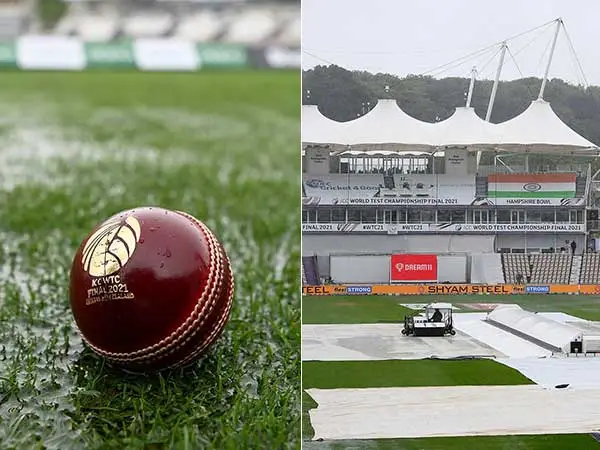Suspended Meaning in Cricket: Amidst the electrifying atmosphere of a cricket match, when the umpire raises his finger and declares “over for bad light” or heavy rain sweeps across the field, we hear the announcer bellow: “The game is suspended due to…” This seemingly simple word, “suspend,” carries within it a complex web of implications and regulations in the cricketing world. Today, we delve into the depths of “suspend” and unravel its multifaceted meaning in the context of this beloved sport.
Understanding the Basics of Suspension in Cricket (Suspended Meaning In Cricket)
A cricket match can be suspended for various reasons, most commonly due to:
Weather conditions:
Rain, thunderstorms, hail, snow, or extreme heat can render the field unplayable, jeopardizing the safety of players and spectators. For instance, the iconic 2019 World Cup final between England and New Zealand was famously suspended due to persistent rain, leading to a nail-biting tie when play resumed.
Bad light:
As dusk approaches, visibility diminishes, making it difficult for batsmen to sight the ball and for fielders to judge catches. Matches held under floodlights are less susceptible to suspension from this cause, but natural light remains a crucial factor on most grounds.
Also Read: Top 10 Fastest Bowlers In Cricket History
Ground conditions:
A wet or uneven pitch can pose a threat to player safety and fair play. In 2020, the third Test between India and Australia in Sydney was suspended after significant cracks appeared on the pitch, raising concerns about player injuries.
Medical emergencies:
If a player sustains an injury that requires immediate medical attention, the match might be temporarily halted to prioritize their well-being. Similarly, an unexpected medical emergency among spectators or officials can warrant suspension.
Technical issues:
Malfunctioning equipment like floodlights or a faulty DRS (Decision Review System) can disrupt the game’s flow. In rare instances, even political unrest or security concerns can lead to match suspensions.

Cricket player suspension:
Cricket is known as a sport for “gentlemen.” It requires skill and planning, and players have to follow a certain set of rules. When players break the code of conduct, they can be banned for a certain number of games, months, or even years, based on what they did wrong and how bad it was. In cricket, the most common reasons for a player to be suspended are bad manners, match-fixing or other forms of corruption. And the illegal use of drugs or substances that boost performance.
Bad sportsmanship includes things like arguing with officials or other players or trying to mess up the game on purpose. Most of the time, these actions can get you suspended. because they aren’t sportsmanlike and make the environment hostile or scary. In match-fixing and other types of corruption, players are paid or given gifts to change the result of a game.
So that the game stays fair, players who fix matches or get involved in cheating may be suspended or even kicked out of the sport for good. Players can be kicked out of cricket for many different reasons. These bans are meant to protect the integrity of the game. Make sure everyone plays fairly, and keep players healthy and safe.
Navigating the Legal Landscape of Suspension
Umpire’s discretion:
The final decision to suspend a match rests with the officiating umpire, who must assess the situation and prioritize player safety and fair play. Their judgment is paramount, and both captains have the right to consult with the umpires regarding any concerns.
Resumption procedures:
The resumption of a suspended match depends on the nature and duration of the stoppage. For weather-related interruptions, the Duckworth-Lewis (D/L) method may be used to adjust the target score if overs are lost. When resuming matches interrupted due to other reasons, the exact score and remaining overs are retained.
Time restrictions:
Matches halted due to bad light have specific time limits for resumption. If play cannot resume within a stipulated timeframe, the match may be declared abandoned, with no result awarded.
Beyond the Stoppage: Implications of Suspension
A suspended match can have a ripple effect beyond the immediate halt in play. Here are some potential consequences:
Strategic shifts:
Depending on the score and remaining overs when the match is suspended, both teams might need to re-evaluate their strategies upon resumption. Batsmen might adopt a more cautious approach if chasing a large target with overs running out, while bowlers might adjust their tactics to capitalize on damp conditions.
Mental adjustments:
Dealing with a sudden stoppage can disrupt the rhythm of players and test their mental fortitude. Maintaining focus and motivation when play resumes after a lengthy break can be a significant challenge.
Spectator frustration:
Fans eagerly anticipating a thrilling finish might be left disappointed with a suspension. Match organizers need to effectively communicate updates and keep spectators informed during such situations to minimize frustration.
Memorable Suspensions in Cricket History
The annals of cricket are dotted with memorable suspensions that added an element of drama and intrigue to the narrative. Here are a few iconic examples:
The 2003 World Cup semifinal:
India’s crucial semifinal clash against Australia in South Africa was halted due to rain, with India needing just 61 runs to win. The Duckworth-Lewis method came into play, leading to a tense finale when play resumed, with India ultimately emerging victorious.
The 2014 Edgbaston Test:
The final Test between England and India was suspended due to bad light on the brink of a thrilling conclusion. With India needing just 2 runs to win and England one wicket away from victory, the match resumed the next day, culminating in a dramatic Indian win.
The 2019 World Cup final:
As mentioned earlier, the 2019 World Cup final between England and New Zealand was suspended due to rain, eventually leading to a tie and a shared trophy. This unique outcome is a consequence of
Why might a cricket match be put on hold?
- Heavy rain, strong winds, lightning, or very high temperatures can all cause a match to be stopped because they make it dangerous to play.
- A match can also be stopped because the players can’t see the ball. To play safely and well, they need to be able to see the ball.
- A match can also be stopped if the pitch is in bad shape and dangerous. If the pitch is too slippery, uneven, or dangerous in some other way, the game must be stopped until the pitch is safe to play on again.
- If one team doesn’t have enough players to form a team,. The match may have to be put on hold until the team has enough players.
- Cricket games can also be stopped for odd reasons, like if an animal like a snake or a bird gets on the field.
- Not only can games be stopped, but so can competitions. The COVID-19 pandemic had a big effect on sports. Many tournaments had to be canceled to keep players, fans, and the business safe from the virus.
- In addition to safety worries, there were also problems with the way things were set up. With restrictions on travel, it was hard for teams to get to tournaments and participate. Also, tournaments were hard to put on because venues were closed.
- In the end, cricket games can be stopped for a number of strange reasons. Cricket games can be stopped at any time, whether because of an accident or a medical emergency.






